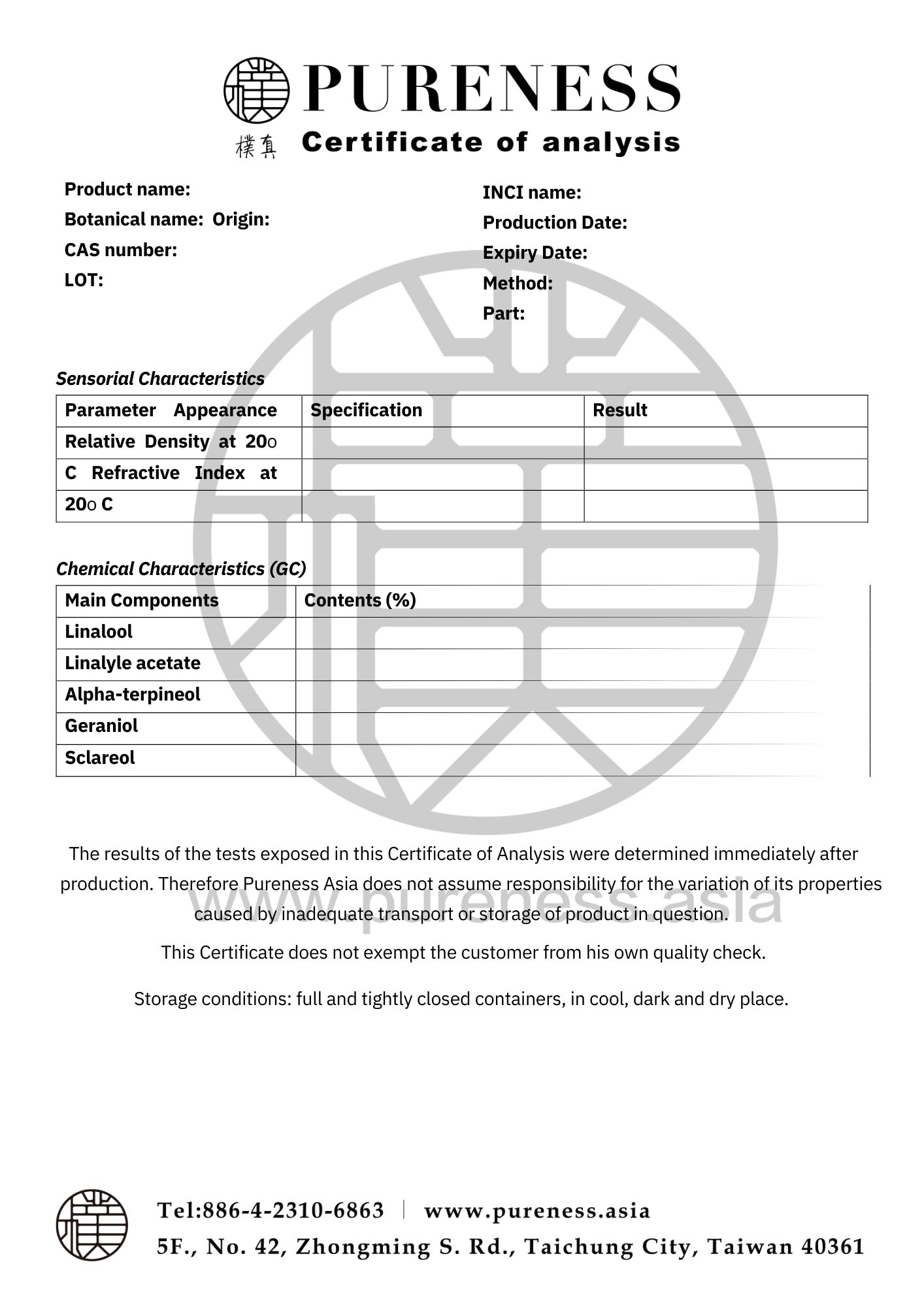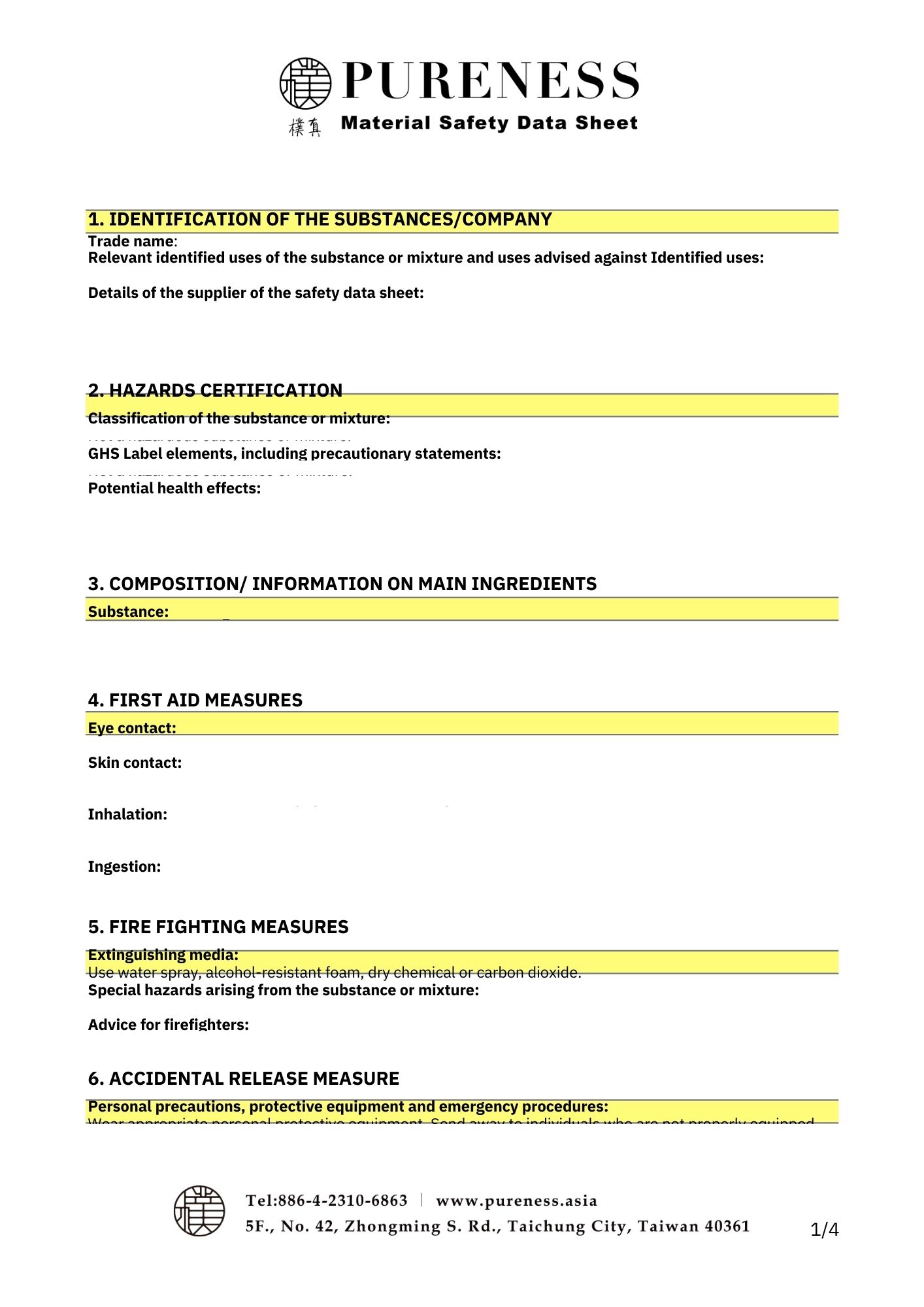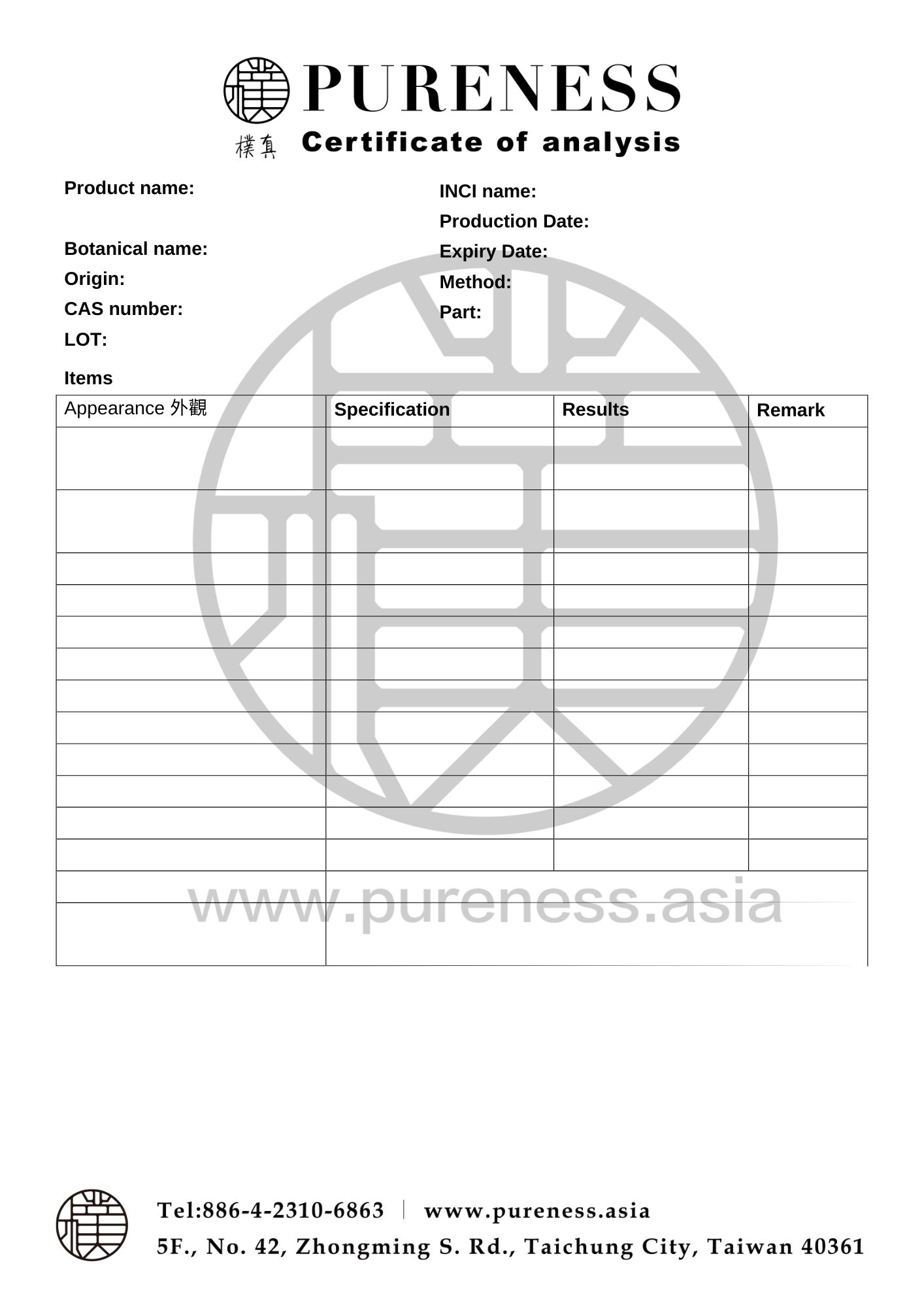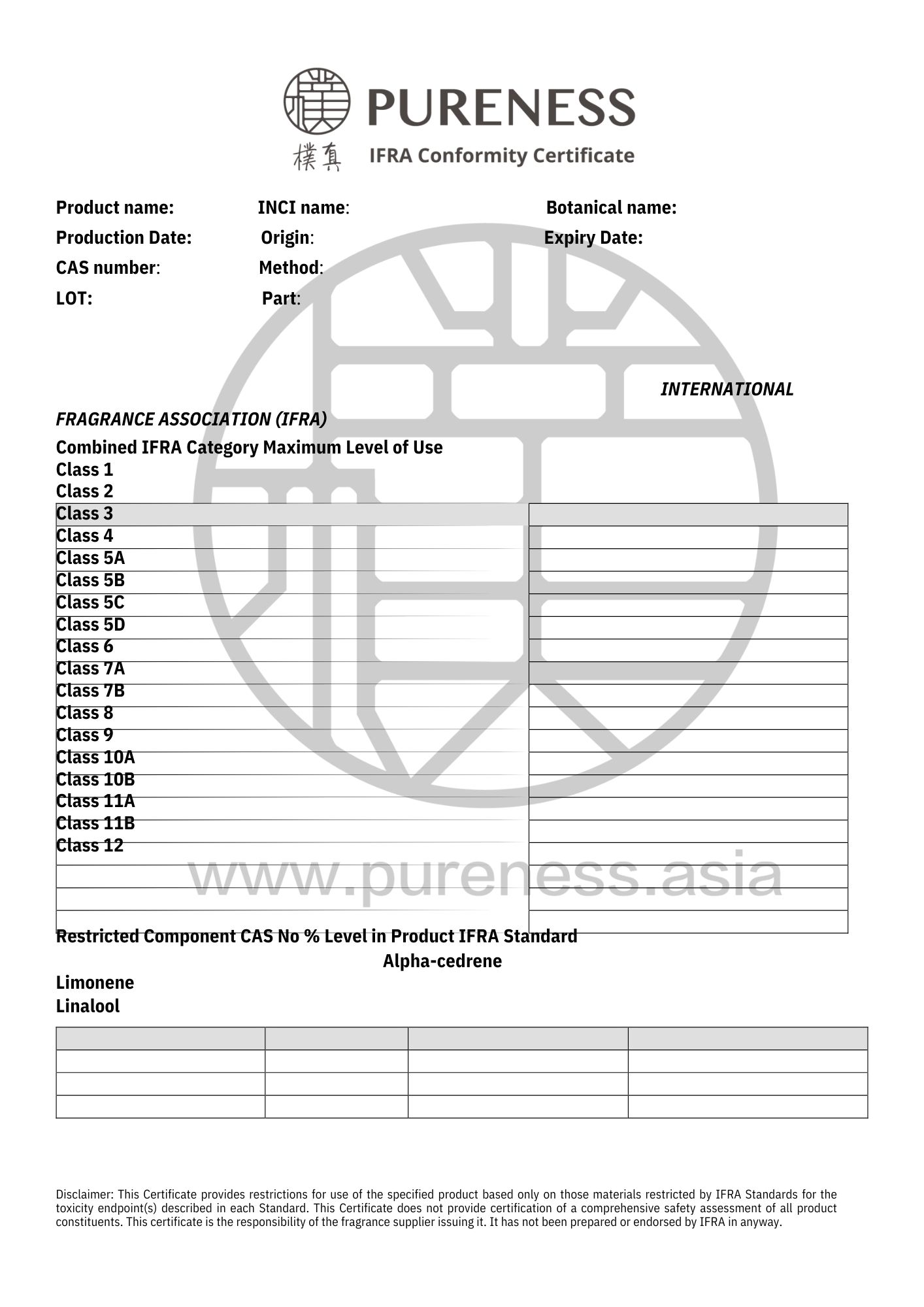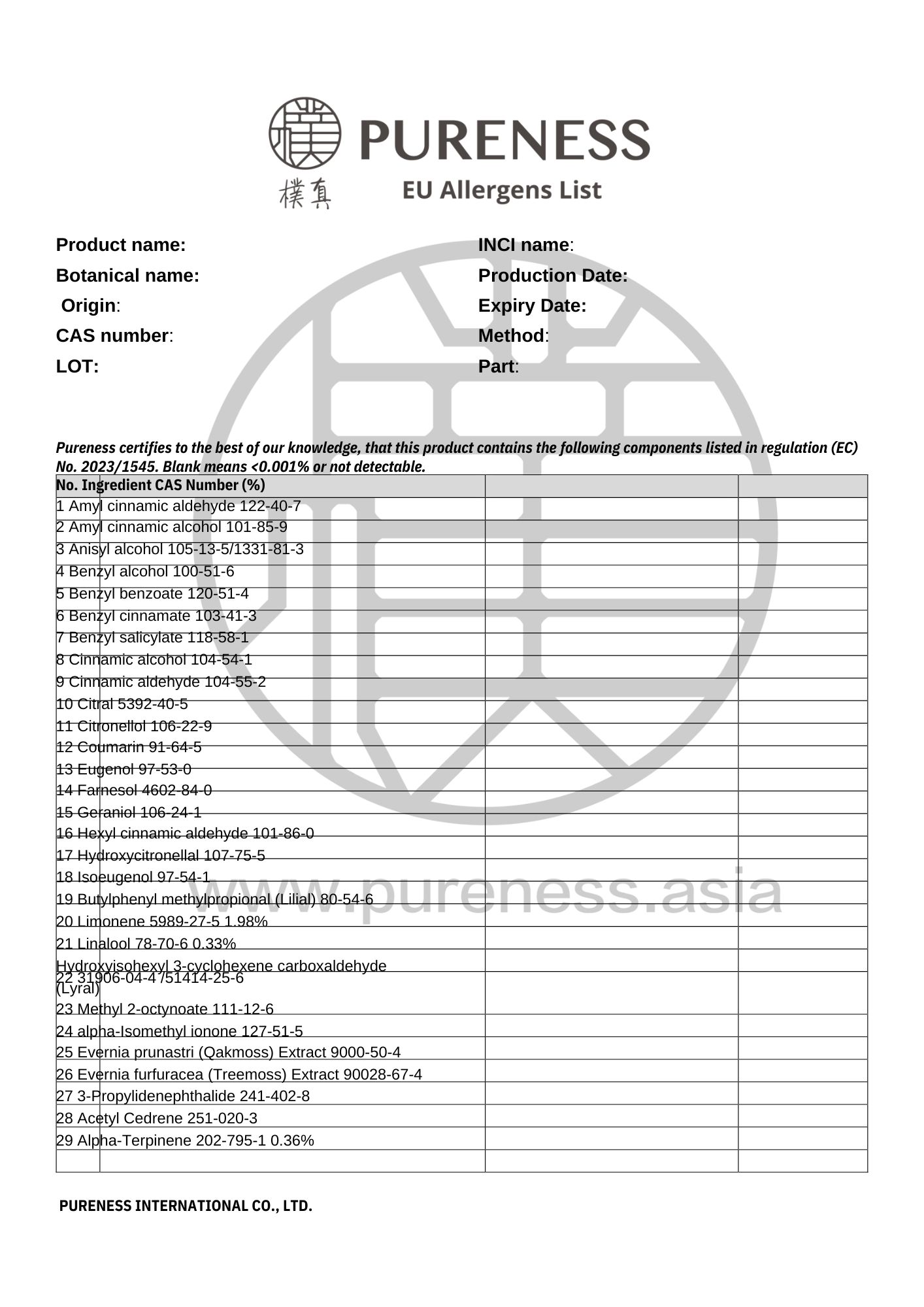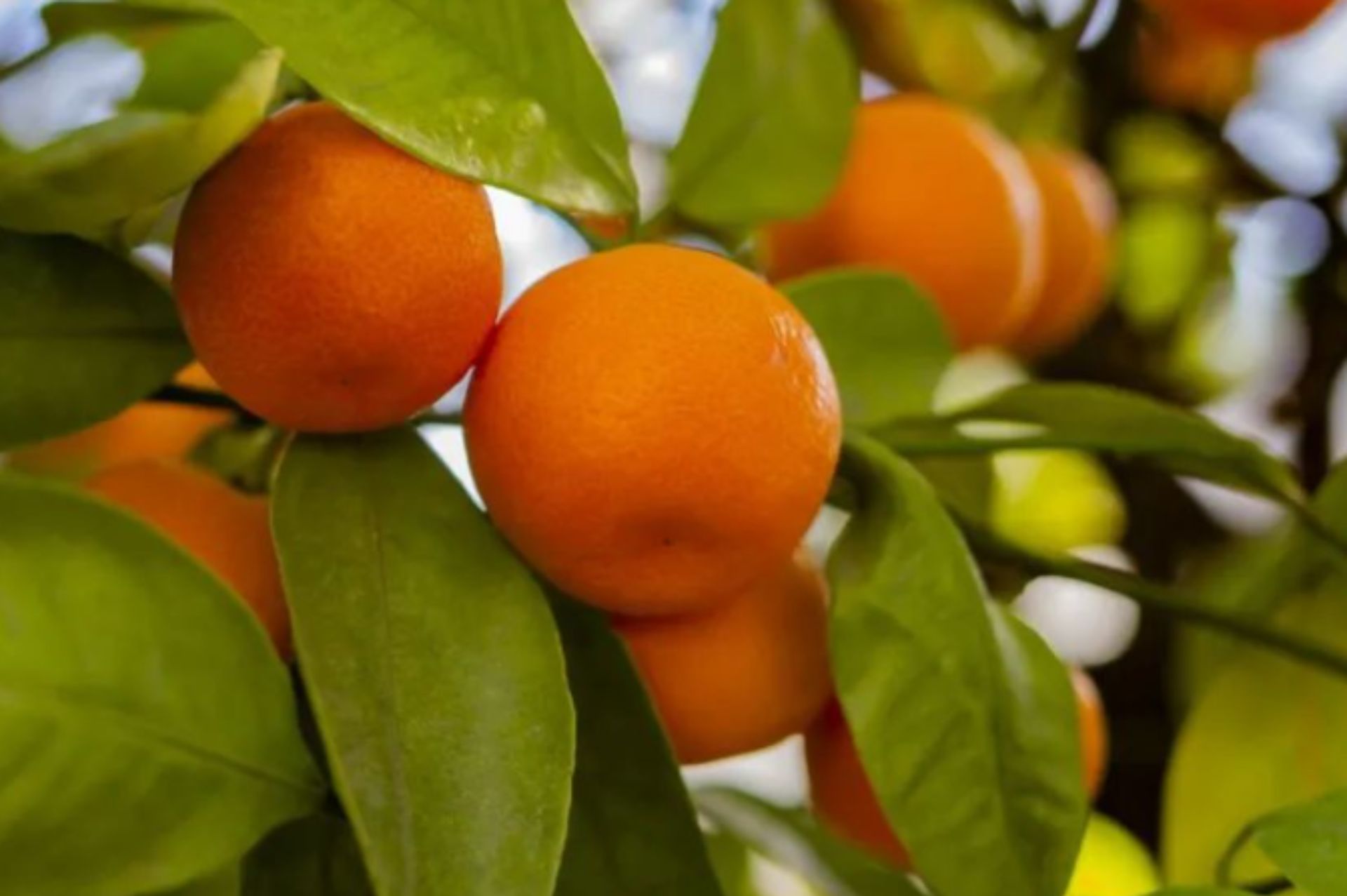
Red Mandarin
Scientific name|Citrus reticulata
Origin|Italy
Classification|Fruit series
Specifications|500g-25kg Please contact sales for details
Extraction part|Peel of a ripe fruit
Extraction method | Cold pressed
Plant family|Rutaceae
Aroma|A richer and warmer scent than sweet orange, with a comforting feeling
▎Essential Oil Introduction
Red Mandarin (Citrus reticulata) is a type of citrus fruit with a rich diversity of origins and varieties. It is an evergreen plant, and the Wenzhou mandarin is of the same species as other mandarins. The fruit is slightly smaller than sweet oranges, with a balanced tartness and a distinctive textured peel. It is abundant and easy to peel, and the segments separate effortlessly. When the peel is removed, a net-like pattern is visible. The common essential oils extracted from this fruit are red mandarin and green mandarin, both scientifically classified as Citrus reticulata (also known as Citrus deliciosa). The term reticulata refers to the "net-like" pattern in the peel.
In ancient China, red mandarin was often used as a tribute, symbolizing good fortune. It was also utilized in Chinese medicine. It was one of the first citrus fruits introduced to Europe and the Americas, where it was also called mandarin. Today, most red mandarin production comes from Italy. The essential oil extracted by cold pressing the peel has properties similar to the traditional Chinese medicine chenpi (dried citrus peel). The fragrance of red mandarin blends well with most essential oils, enhancing their effects.
▎Component Analysis
|Main Component: Monoterpenes
Its components include limonene, α-pinene, and β-myrcene.
|Research Validation

▸ Citrus fruits are grouped based on genetic similarities. Most citrus varieties are hybrids of the three species located at the triangular area of the diagram. Genetically different hybrids often share the same common name.

▸ The study "Revealing the Phylogenetic Origins of Sour Orange and Lemon Through Cytoplasmic and Nuclear Markers" was published in Annals of Botany in 2016, volume 117, pages 565-583.

▸ A 2005 study found that red mandarin has been researched for its effects on inducing apoptosis in human SNU-668 cells.
|Raw Material Certifications
To obtain relevant certification information, please contact us on WhatsApp.
▎References
- González-Mas MC、Rambla JL、López-Gresa MP、Blázquez MA、Granell A。柑橘精油中的揮發性化合物:綜合綜述。前植物科學。 2019 年 2 月 5 日;10:12。
- Restuccia C、Oliveri Conti G、Zuccarello P、Parafati L、Cristaldi A、Ferrante M。不同柑橘精油抑制黃麴菌生長和 B1 黃麴毒素生物合成的功效。環境科學污染研究中心。 2019年10月;26(30):31263-31272。
- 王峰,陳L,陳紅,陳S,劉Y。利用UPLC-ESI-MS/MS分析柑橘皮(Citrus reticulata“大紅袍”)中的類黃酮代謝物。分子。 2019 年 7 月 24 日;24(15):2680。
- 柑橘皮預防癌症。 Nair SA、Sr RK、Nair AS、Baby S. 植物醫學。 2018 年 11 月 15 日;50:231-237。
- Sharma K.、Mahato N.、Cho MH、Lee YR 將柑橘廢棄物轉化為加值產品:經濟且環保的方法。營養。 2017;34:29–46。
- Van Hung P、Chi PT、Phi NT。越南柑橘精油的抗真菌活性比較。納特產品研究中心。 2013 年 3 月;27(4-5):506-8。
- Martín MA、Siles JA、Chica AF、Martín A。橙皮廢物的生物甲烷化。生物資源。技術。 2010;101:8993–8999。
- Setzer WN.精油和抗焦慮芳香療法。 Nat Prod Commun。 2009 年 9 月;4(9):1305-16。
- Anwar F.、Naseer R.、Bhanger MI、Ashraf S.、Talpur FN、Aladeduye FA 巴基斯坦柑橘種子和種子油的物理化學特性。 J. Am.石油化工.蘇克。 2008;85:321-330。
- Citrus Reticulata Blanco 誘導人類胃癌細胞凋亡 SNU-668 雜誌。營養與癌症第 51 卷,2005 年 - 第 1 期
- Mabberley DJ Citrus(芸香科):對字源學、系統學和醫學應用的最新進展的回顧。布魯梅亞。 2004;49:481-498。
- Moore GA 柳橙和檸檬:從分子標記中了解柑橘分類的線索。趨勢基因。 2001;17:536-540。
- Caccioni DR、Guizzardi M、Biondi DM、Renda A、Ruberto G。柑橘類水果精油的揮發性成分與對指狀青黴和意大利青霉的抗菌作用之間的關係。國際食品微生物雜誌。 1998 年 8 月 18 日;43(1-2):73-9。
|Some images sourced from the internet. Contact for copyright removal|
